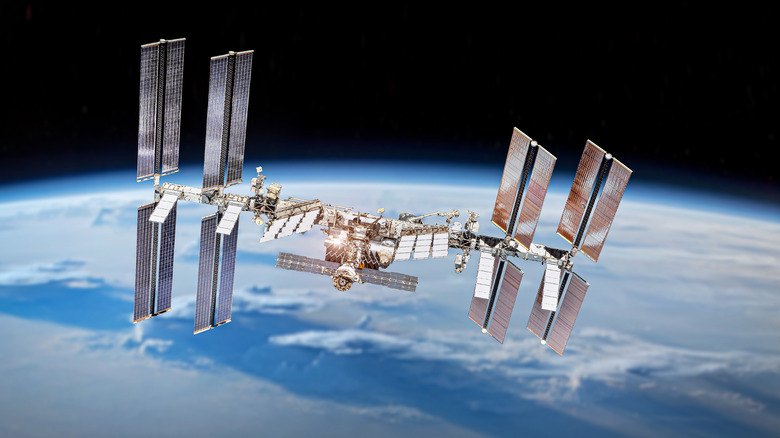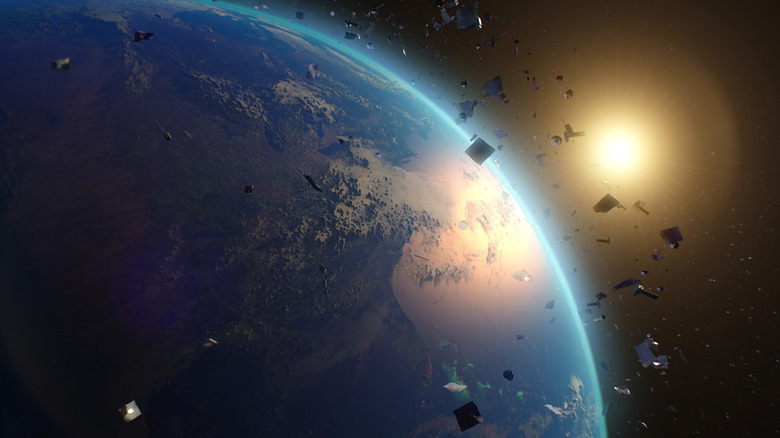International Space Station Swerves To Avoid The Satellite Russia Blew Up
With fifteen different countries and five space agencies directly or indirectly involved in the project, the International Space Station (ISS) is often cited as an example of what humans could achieve with global cooperation. The agencies involved in the making, maintenance, and ongoing research programs aboard the ISS include NASA (United States), Roscosmos (Russia), JAXA (Japan), ESA (Europe), and CSA (Canada). Thanks to the excellent cooperation between these agencies, the ISS has been orbiting the Earth for nearly 24 years, and has had continuous human presence for nearly 22 years.
The ISS has had an exemplary safety record in the two decades and has safely orbited the planet without problems. However, given that the ISS is in a low earth orbit around the planet, it shares its orbital space with many other satellites. With thousands of satellites making it to the same trajectory every year to replace old defunct ones, the ISS is at an increased threat of being hit by space debris: an umbrella term for any object in an uncontrolled orbit around the Earth.
Since its earliest days, the ISS has had to make several adjustments to its orbits to avoid being hit by space debris. While most of these adjustments resulted from space debris inadvertently crossing paths with the ISS, the most recent such maneuvers are largely thought to be the result of deteriorating Russo-U.S. relations and an increasing number of anti-satellite weapon tests. Four months after the ISS made its last debris avoidance maneuver, NASA recently confirmed that it was forced to execute another such move on October 24, 2022.
Just three miles from disaster
According to NASA, the International Space Station recently performed something known as the Pre-Determined Debris Avoidance Maneuver (PDAM) to minimize its chances of being hit by space debris from a defunct Russian satellite called Kosmos 1408. In a press note, NASA revealed that the ISS's Progress 81 thrusters fired for 5 minutes and 5 seconds to execute this move. The maneuver resulted in the space station getting an extra measure of distance from the space debris. Without that, it was predicted that the fragment could have passed within about three miles of the station's orbit.
Launched nearly four decades ago, in 1982, the Kosmos-1408 satellite operated for two years before being decommissioned but has been orbiting the Earth ever since. It made headlines in 2021, after Russia selected it as the target of the country's anti-satellite missile program. In November 2021, Russia destroyed Kosmos 1408 as a part of an anti-satellite weapon test. This debris belonging to this old satellite has been orbiting the Earth since then, and has threatened the ISS on more than one occasion now.
After Russia went ahead with the anti-satellite missile test in November 2021, the US Space Command criticized the country, declaring it a reckless and dangerous act. In response, Russia's defense ministry claimed that its test did not threaten the International Space Station. A ministry official went on to insist that the U.S "knows" that Russia's test did not and will not pose any threat to any spacecraft, and that America's fears were unfounded.

